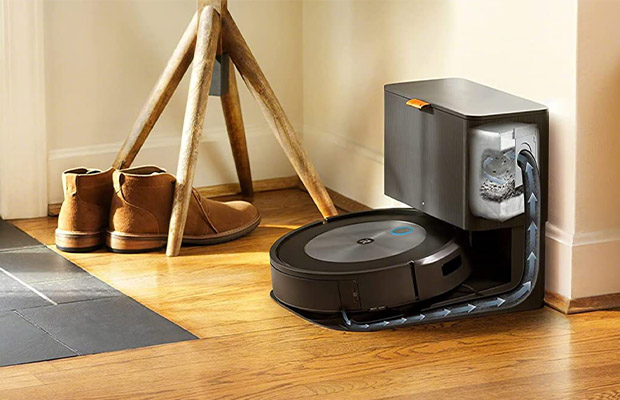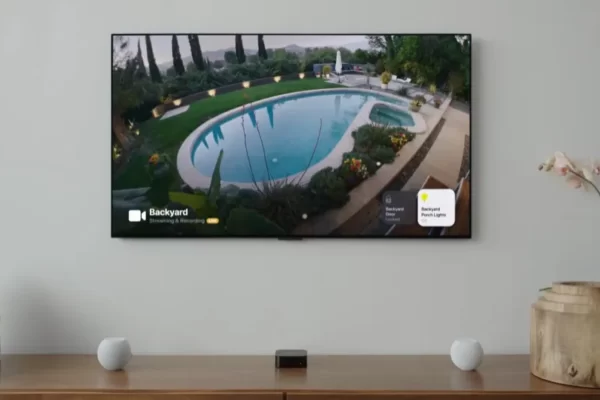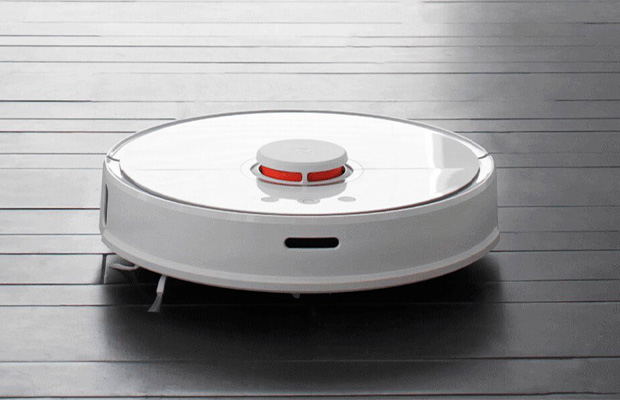You overheard someone raving about their Roomba robot vacuum and now you’re wondering is a Roomba worth it. For most people, the iRobot Roomba robot vacuums are definitely worth the price.
With the touch of a button, they can easily clean carpet, ceramic, vinyl, laminate, and hardwood floors. Your floors can be cleaned without you even being there.
We’ll examine its benefits and drawbacks to help you decide if it’s worthwhile to purchase.
Table of Contents
7 Reasons to Buy a Roomba
1. Roombas Are Convenient
The best time to vacuum is never. It takes way too long and is a noisy, boring task.
Better things to do with your time exist. I’m not here to pass judgment if you simply don’t want to do it.
On the other hand, a floor that has just been vacuumed feels more comfortable. Additionally, routine vacuuming removes dust and allergens, making your home healthier and smelling better.
2. Roombas Can Clean on a Schedule
We’ve all procrastinated instead of sweeping or vacuuming, and most of us have occasionally forgotten one or two chores. Without regard for our busy lives, the dust and dirt just keep piling up in the interim.
Roomba never forgets anything and never puts something off. It is possible to schedule one or more cleanings per day for every Roomba model. For every day of the week, you can even have a different schedule.
Robotic vacuums can operate with or without you, so your Roomba can continue to do its job while you are watching Hulu or getting a much-needed rest. You can return home to a paradise free of dust because it can even run while you’re on vacation.
3. Roombas Can Spot Clean
A full-house clean is not always necessary. Even small, discrete messes call for an immediate response. However, they might not be worth the effort required to get up from your couch and get your regular vacuum out of the closet.
Long before the most recent models, Roombas had a spot-cleaning option, but now they really set the bar high for the ease of cleaning up small spills. The Roomba is no longer necessary to bring to the cleaning area. Simply tell your Roomba to clean up the mess wherever it is—behind the couch, under the table, or wherever else.
4. Roombas Can Clean under Furniture
When was the last time you cleaned under your couch with a vacuum? What about your bed? These areas tend to collect dust just as much as other areas.
When we clean, we frequently overlook places, but the Roomba goes everywhere it can. Tell me honestly if you don’t want a Roomba to assist you in keeping your home clean after you consider all the hidden dirt.
5. Roombas Can Clean When You Can’t
There is never a good time for a mess, and they always seem to happen when things are most chaotic. You require a helper like Roomba when your hands are full or you simply lack the time.
Roombas in more recent generations are now hands-free. They can be started without even having access to the app. Instead, you can ask Alexa or Google Home to control your Roomba. There aren’t many more convenient options than that.
6. Roombas Can Clean All Types of Flooring
Early robotic vacuum cleaners struggled with some types of flooring. They frequently only partially cleaned thick carpet, and some would damage hardwood floors.
Since then, Roomba has advanced significantly. Modern models can manage almost any kind of flooring. These vacuums can be used on carpets, rugs, hardwood, laminate, and tile.
Best of all, they are able to make the change from carpet to hard flooring and back again on their own. You can thank Roomba’s multi-surface brushes, which are patented. As it keeps a closer bond with the floor, the flexible rubber is more gentle than traditional bristle brushes.
7. Roomba Can Pair With Braava for Mopping
Even the most sophisticated Roombas can only clean your floor. However, Roomba has a buddy who can clean as well. Braava is that friend, and virtually every benefit we’ve discussed for Roomba also applies to a robot mop.
Even better, you can use schedules or voice commands to synchronize Roomba and Braava. Your floor will always be the cleanest because Braava can mop as soon as Roomba is done vacuuming.
Related Post: Does Roomba Go Over Rugs?
7 Reasons Not to Buy a Roomba
1. Some Roombas Are Expensive
A low-end model (like the Roomba 614) is now even more affordable than the $200 original Roomba, which debuted in the marketplace. But most people are not interested in the standard model.
iRobot has filled their more advanced Roombas with a variety of practical features. For a vanity paint job, you are not paying more. The more advanced Roombas can map your home to clean more quickly and thoroughly, have stronger suction, auto-emptying dirt bins, and have better suction.
But there is a cost associated with each of those advantages. The most expensive Roombas are around $1000. Furthermore, if you want both a robot vacuum and a robot mop, you can increase that cost by at least $200.
Most likely, you won’t have to spend that much money on your Roomba. However, Roombas that cost less than about $500 are missing out on some of the most useful features we’ve covered in this article.
2. Roombas Can Get Stuck
The majority of the time, Roombas are adept at determining which pieces of furniture they can and cannot fit under. They occasionally make mistakes, however, and find themselves in a trap.
There are numerous ways to keep your Roomba from getting wedged under your couch or bed. For more sophisticated models or raised bumper guards for less expensive ones, use keep-out zones. To give your robot vacuum a little more room to maneuver, you could even use furniture risers.
However, despite all of those fixes, Roomba will probably become stuck at some point. It’s just a typical aspect of owning a robot vacuum, and it probably always will be.
3. Roombas Have Small Dust Bins
The 300–700 mL capacity of a Roomba dust bin is between 1 and 3 cups of dirt. That ought to be sufficient for a complete run if Roomba is used daily in a small house. The amount of dirt that a single Roomba run can easily gather in large homes or homes with high foot traffic.
A Roomba’s convenience is seriously diminished by the excessive number of times it must be emptied. A Roomba with a self-emptying bin can help you with this problem, but the cost is increased. Self-emptying Roombas can cost $500 or more, even at their cheapest.
4. Some Roombas Can’t Handle Long Hairs
Long hairs are difficult for all vacuums; this isn’t a problem specific to the Roomba. In comparison to bristle brushes, Roomba’s rubber brushes are better at handling these hairs, but they will eventually tangle.
Even worse, the Roomba’s wheels, particularly the large castor wheel, can become entangled in the long hairs. With one straightforward improvement—moving the wheel—the Roomba S9 is the first Roomba to (mostly) address this issue. The wheel is now located behind the brushes, where it is largely protected from running over hairs, as opposed to being out front where it would have done so.
5. Roombas Can’t Clean Everywhere
Low-lying furniture will prevent your Roomba from cleaning underneath it, though furniture risers can help in some cases. Furthermore, it won’t be able to fit into small spaces. In essence, if you ever need to move an object in order to vacuum somewhere, a Roomba won’t be able to do it.
However, Roomba is not completely useless as a result. Vacuuming typically takes place in the open or beneath reasonably tall furniture. Just keep in mind that if you want a thorough clean, your robot vacuum will need assistance.
6. Roombas Sometimes Eat Things They Shouldn’t
Like a typical vacuum, Roombas attempt to capture everything they come across. The main distinction is that your upright vacuum doesn’t stray off on its own. The autonomy that makes Roomba useful can also make it dangerous.
Roomba cannot be allowed to roam freely near small objects. A good rule of thumb is that anything that could choke a toddler also poses a risk to the Roomba. In the worst case scenario, you can always go through Roomba’s dust bin later, but picking up first is simpler.
The handling of cords by Roomba is the bigger issue. Small cords can quickly entangle themselves around Roomba’s wheels, causing it to pull on whatever it is connected to. There’s a reason why I focus so much of my advice for Roomba owners on cable and cord security.
7. Roombas Sometimes Get Lost
Occasionally, Roomba loses its sense of how to reach its dock for charging. Its battery might run out before it reaches its destination, forcing you to pick up your robot friend and assist it in finding its home.
That’s not a big deal because Roombas are portable. However, a dead or misplaced Roomba will take a while to recharge, which will significantly slow down your cleaning.
Roombas have become much more adept at navigating since the introduction of their Imprint Smart Mapping technology. They have now memorized the layout of your house, including where their home base is. The fact that Roomba can store multiple floor plans in its memory allows you to use it on multiple floors.
If you rearrange your furniture, even with smart mapping, Roomba might become confused. Even the most sophisticated Roomba can end up as a lost little robot that has no idea how to get home if its usual path is blocked.
Who is An IRobot Roomba Good For?
An iRobot Roomba is good for you if:
- You are ok with your floors being good, not perfect
- You have other things you’d rather do than clean the floors
- You have bigger open floor areas
- You have hard floors and normal-medium length carpets
I’ve only heard positive feedback so far from people who decide to purchase a Roomba. They are not suitable for everybody, though.
A Roomba is NOT for You If:
- You have long, shaggy carpet
- You are a control freak or need your floors cleaned perfectly
- You have lots of furniture, toys, or clothes covering your floors
- You regularly have things like messy food, kid slime, or animal poop on the floor (a robot vacuum will just make a bigger mess out of these…no fun)
Following are a few more things you should be aware of before purchasing a Roomba if you’ve decided based on the aforementioned criteria that a Roomba might be a good fit for you.
What You Need to Know Before Buying a Robot Vacuum
The top 3 things you need to know before you buy your Roomba:
- To prevent the robot vacuum from becoming stuck, you must clear the area (for example. clothes and cords)
- You must place something in front of stairways (e.g. if you have an opening to stairs that go down, the robot vacuum can fall down the stairs). A vacuum that comes with a “wall” works great, as can a tote or box.
- You will use it and love it so much, it will be like a pet in your family and you will name it
The Alternative? Manual Vacuuming
If you stick to a few simple ground rules, a manual vacuum can serve you much better. You can complete the task quickly and efficiently—let’s say, like a robot—by following these quick tips.
Follow a grid: Consider your floor to be a grid and follow it when vacuuming. This will guarantee that you clean every square inch of your house, giving your floors an extra deep clean.
Clean your vacuum: It is only fair that you clean your vacuum after all the hard cleaning it has done. To avoid spreading dirt all over, take out the brush and give it a good, soapy soak every now and then.
Use your attachments: A traditional vacuum will also include a variety of attachments in addition to the main cleaning head for cleaning high places like ceilings, fans, and vents, as well as for suctioning upholstery. Use them.
Go from high to low: Although they don’t require as much attention as your floors do, clean the ceilings and fans first when you do decide to do so. You can suck up the dust on your bottom pass after it falls to the ground.
Final Thoughts: is a Roomba Worth It?
So, is a Roomba worth it? In general, I would say yes, but only if you get the right one. Although the Roomba 675 has an excellent price point and is an affordable vacuum, its overall functionality is diminished due to poor suction, poor navigation, and other issues.
Although cleaning robots are the way of the future, not everyone can yet benefit from that future. A few technical issues still need to be resolved, such as some of the Roomba’s Wi-Fi connection issues or the frequently perplexing Roomba charging lights. But we’ve come a long way from Roombas missing vast swaths of dirt or falling down stairs as a result of inaccurate mapping.
Your smart home might not require a robot vacuum. Ultimately, the question is: Is the higher purchase price justified by the additional convenience? And the only person who can respond to that query is you.
Read More: Is a Kindle Worth It?
FAQs
Is a Roomba Worth It for Pet Hair?
Yes. This high-end robot vacuum does a fantastic job of dealing with pet hair on both low and high-pile carpet, not to mention bare surfaces.
Is a Roomba Worth It for Hardwood Floors?
Yes, and the iRobot Roomba 694 topped our testers’ list of the best robot vacuums for hardwood floors. Although it was very good at sucking up dirt and dust, it didn’t drain your budget nearly as much.




